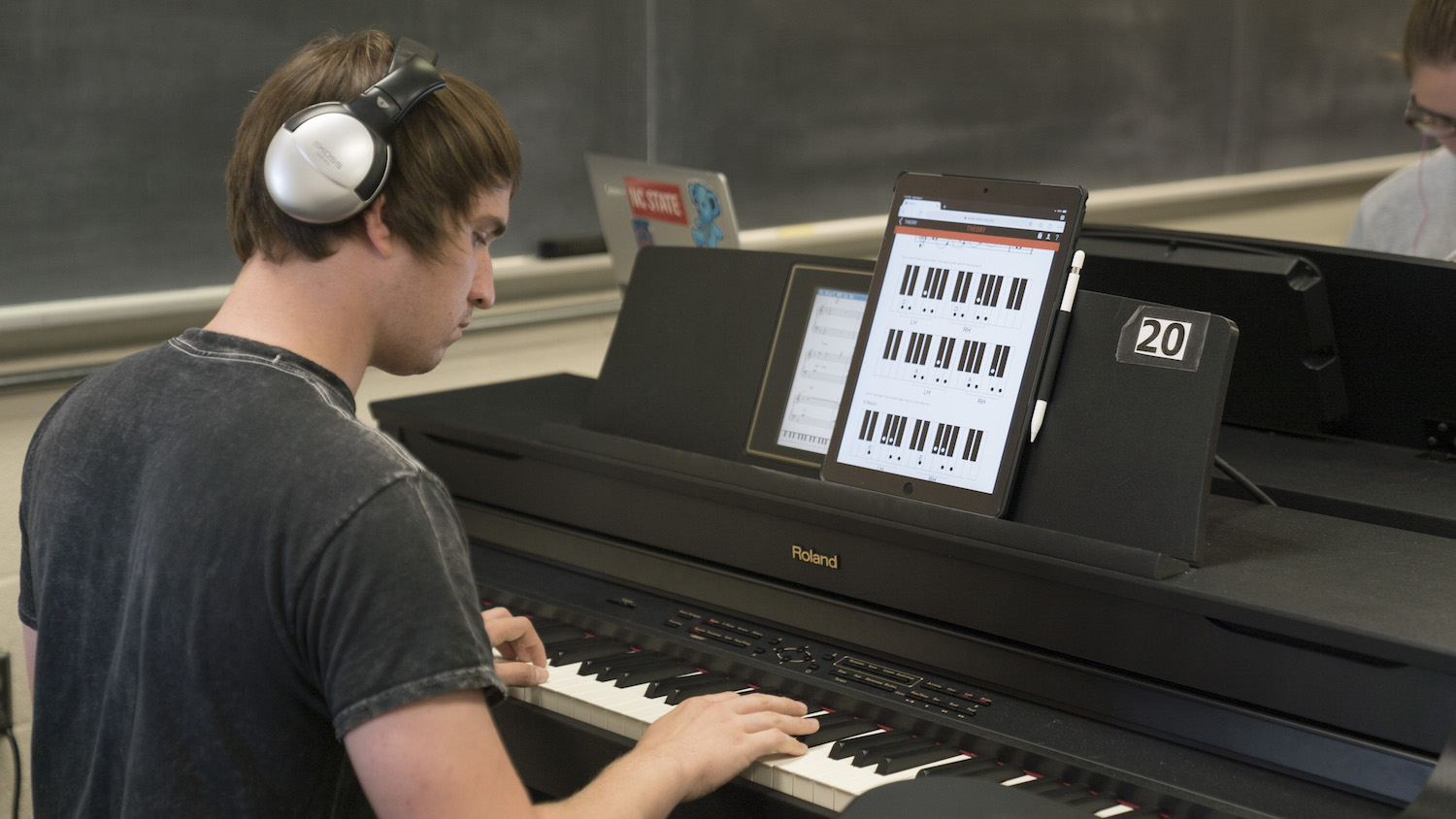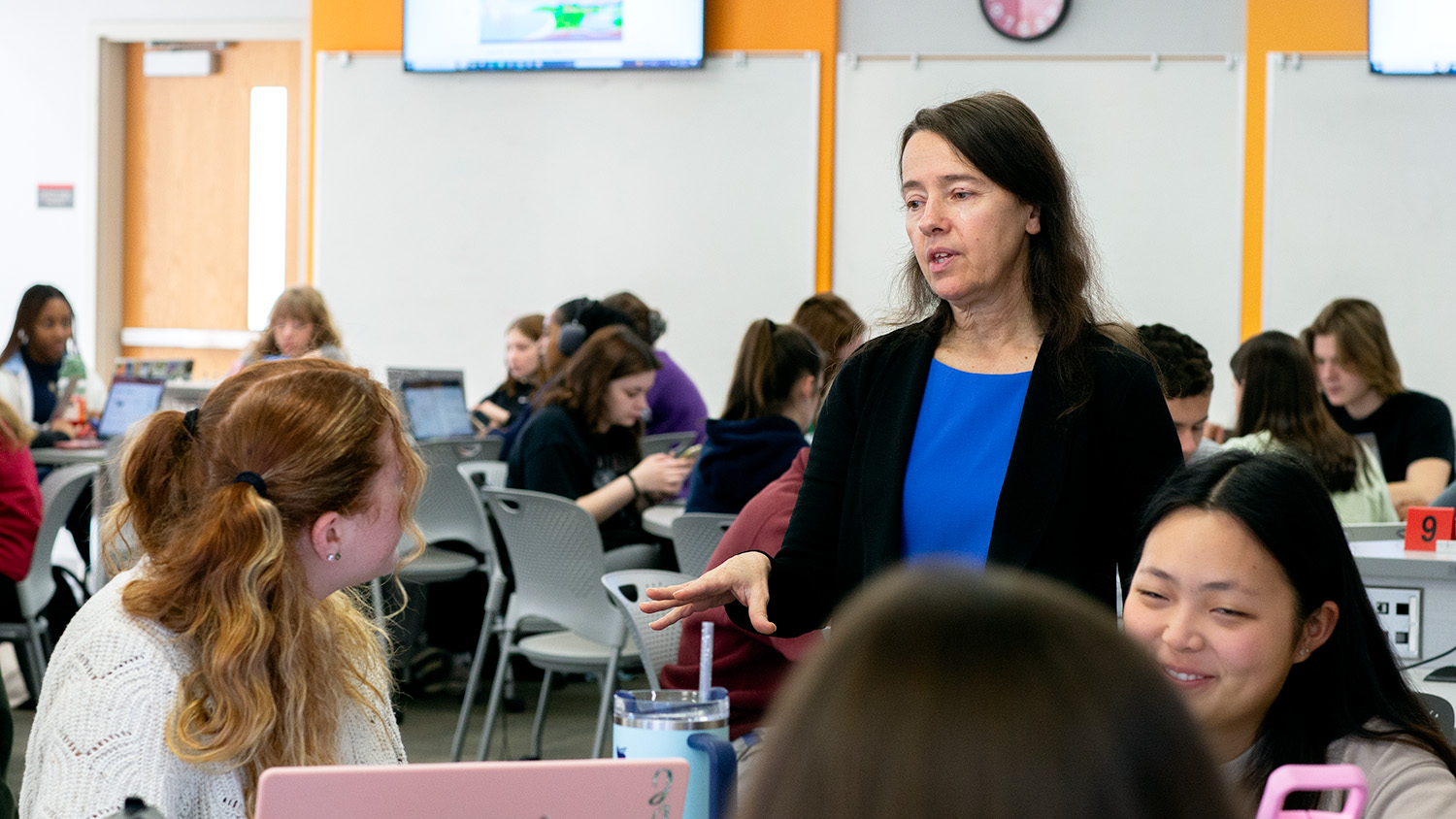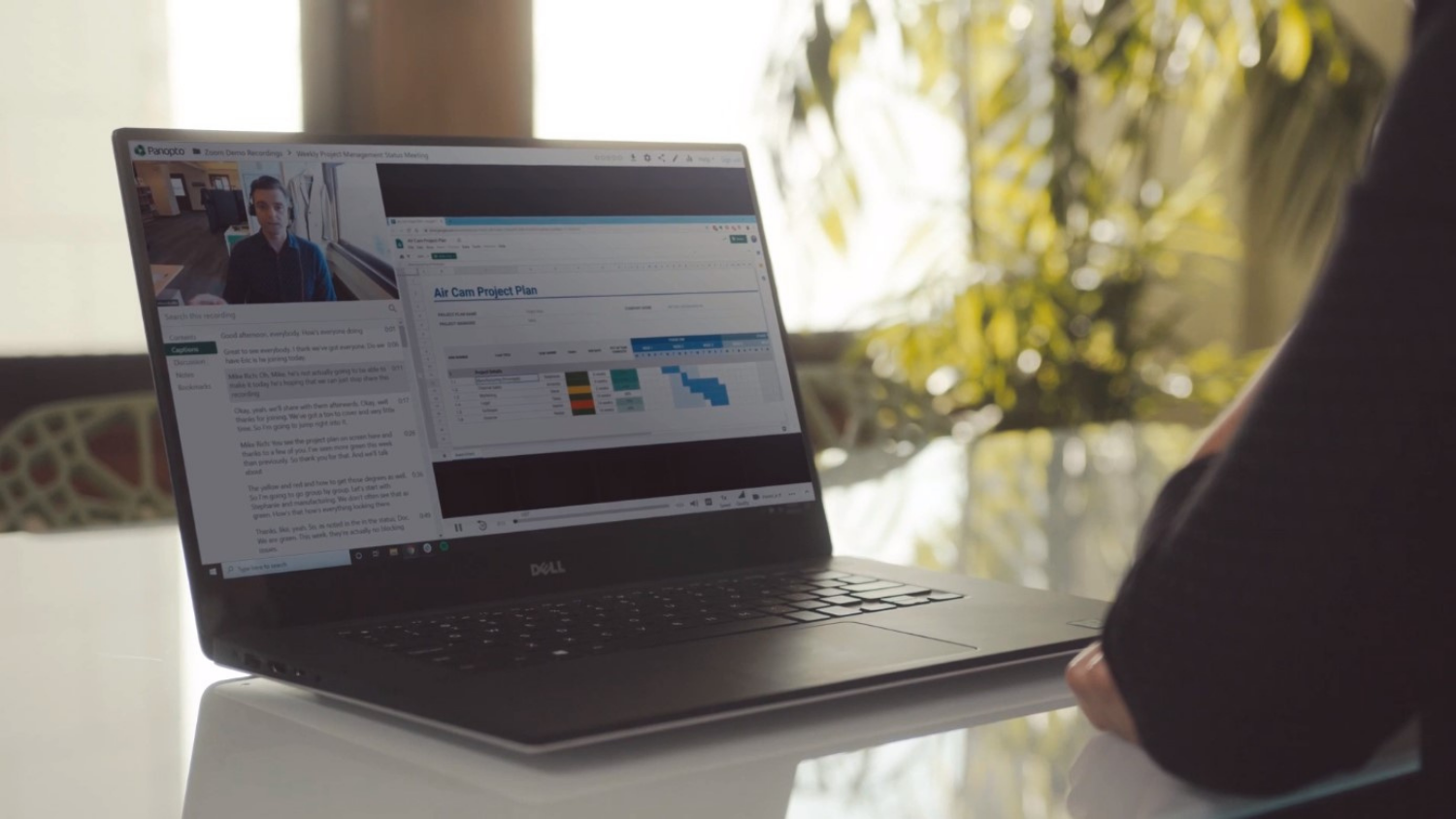Class Piano Goes Digital

Imagine learning to play piano on a digital device that recognizes the notes you’re playing and gives you feedback based on what you’ve played. Seem like something from the future?
Well, it’s not.
Through a DELTA Exploratory Grant, a team of staff members partnered with Associate Teaching Professor Olga Kleiankina from the Department of Music to bring her vision of a modernized textbook application to life.
Kleiankina sought to create a more adaptable method textbook that could function like a website or an app that met at least two conditions — have an easy to update format, and a potential to collect a huge number of exercises and solos in the coming years.
The Piano+ Interactive Piano Method Book was created and checked all the boxes. The app goes above and beyond anything you could find in a traditional method book. It includes a variety of resources and serves as a one-stop shop for students in Kleiankina’s beginning piano class.
“I am amazed how an idea born in one head can take new transformations with the input of other people on the team. We are creating a very fine product that seems to take care of so many needs,” says Kleiankina.
Inspiration and Goals
“The current books that are used for piano training are about 20 years old, and even the newer materials that come out on the market do not satisfy the needs for my classes,” says Kleiankina. “Partially it is because many piano methods are created for music majors, who do not need to spend too much time learning the fundamental concepts of music theory.”
However, in Kleiankina’s classes, she covers a variety of disciplines in the context of beginning piano training, including theory, jazz, composition, and improvisation. So, she needed a book to fit the needs of her course.
Instructional Designer Caitlin McKeown adds that the need for a digital application to keep track of various paper assignments was also a necessity.
Kleiankina says, “I would like mine and my student’s experience in the class and beyond to be a positive one. It is always easy to teach when all your materials are at the fingertips, and I don’t need to create extra materials for every class, worrying afterward that the students might lose them and never go back.”
In addition, prior to working with DELTA, Kleiankina worked with John Nietfeld from the College of Education and graduate students Rebeca Lima and DELTA’s very own Dan Spencer to structure her class and develop materials to encourage and reinforce students’ metacognitive processes.
This work was incorporated into the Piano+ app through streamlined reflection opportunities such as questions and evaluations. In addition, a goal of the app was to promote greater self-reliance and self-efficacy through the combination of targeted lessons, automated feedback and integrated strategies.
“I also want to create value for all piano instructors or independent learners who choose to use this book,” Kleiankina adds.
Piano+
The Piano+: Interactive Piano Method Book houses traditional text content, lessons, videos, a library of more than 300 exercises and solos, theory segments and much more.
The course also incorporates frameworks that revolve around teaching and learning how to practice. All the goals, strategies and guided questions circle back to helping students actively think about what they’re practicing.
When students begin working on an exercise, the app displays questions that encourage the users to think about their goals. It also offers tips and strategies that are useful in reaching those goals. Learners are able to evaluate themselves and keep track of the strategies that were used during their practicing.
This information, as well as the data on the time spent practicing and the exercises and lessons completed, is stored in each individual student’s profile page that acts as a class log for the user.
“The students will be able to choose their own pace, goals and direction, and I hope they will continue using this resource even after they complete the course,” says Kleiankina.
Multimedia Designer David Tredwell says the exciting and different part of the app is the interactivity.
“When you plug in a keyboard, the app recognizes the notes. You can elect to get technical feedback and turn on a metronome to see if you hit the right notes,” Tredwell says. “This is very helpful if students are playing at home and the instructor is not there,” McKeown adds.
While practicing, students can annotate their digital sheet music with their fingers or a pen on a touch screen — a stark contrast from traditional sheet music on paper. Piano+ is also responsive to screen size and will adjust to each device.
Positively Impacting Student Success
“This book has a wide range of topics and exercises that cannot be found in one single printed piano book, simply because it would be too thick and too heavy,” Kleiankina notes. “Also, the interactive and video lessons are integrated in the app, so the students will not need to switch between a book and a computer.”
Piano+ will make it immensely easier for students in the future to practice music at their fingertips.
The app was designed to be easily updated and to continuously grow the library of exercises and solos.
“I like the idea of ever-growing content. Hopefully, it will become something bigger than we can imagine today,” Kleiankina says.


